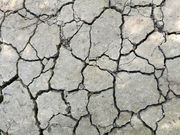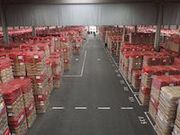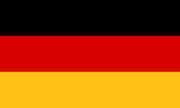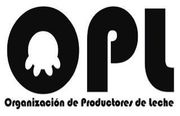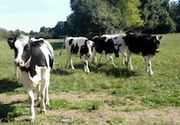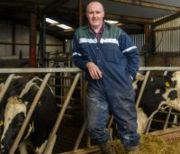EMB Newsletter July 2018
Newsletter as PDF
Contact
EMB - European Milk Board asbl
Rue de la Loi 155
B-1040 Bruxelles
Phone: +32 - 2808 - 1935
Fax: +32 - 2808 - 8265
Dear dairy farmers, dear interested parties,

As newly elected member of the Executive Committee of the European Milk Board, I would like to draw your attention in my editorial on current issues in Ireland. Angers mounts as Ireland’s biggest Co-op underpays on May milk price.
This latest round of price announcements by the Irish Co-ops for milk supplied in May has been controversial – specifically the 29 cents/L base price announced by Glanbia, Ireland’s largest processor. Defying all the market trends and evidence and the price rises announced by the other Irish Co-ops, Glanbia announced a price that leaves it three cents per litre adrift of even middle-of-the-road paying Co-ops. In the context of the fact that April and May are peak production months in Ireland and dairy farmers would expect to produce 25 per cent of their annual production in these two months, the Glanbia decision to ‘go low’ meant that someone supplying them with 100,000L for April and May has been paid nearly €3000 less for that milk than the standard price paid by other Co-ops. Not surprisingly the decision caused much fury and frustration amongst its suppliers – thousands of whom are ICMSA members. The anger was compounded by the fact that the Ornua Index (Irish Dairy Board Index) translated directly across to a price of 31.4 ct/L and that price is historical in that it represents what Ornua has paid the Co-ops for product supplied. In other words, it’s not ‘current’, it’s what has already been paid. The Glanbia decision therefore represents a deliberate strategy not to pay farmers the price that the Co-op itself has received. At any time, ICMSA regards this practice as completely unacceptable but in light of the challenges presented by the very difficult Winter 17/18 and Spring 18 that farmers in Ireland have faced, it is quite astonishing. ICMSA has also reiterated our conviction that it is incumbent upon Co-ops to pay the highest base price possible; we do not accept – and we never will – the trend that has begun of paying absolutely bottom base price and then topping that up with special ‘hardship’ or other discretionary bonuses. Farmers do not want payment at the ‘discretion’ of the Co-ops, they want the highest price per litre that the Co-op can pay. And, to my previous point, they certainly want the same price as was received by the Co-op.
Reaction to Commissioner Hogan’s CAP proposals was one of disappointment: ICMSA believes that proceeding with a reduced CAP budget actually vindicates the Brexiteer bogus argument that CAP was disproportionately subsidised by UK taxpayers. Reducing the CAP budget is profoundly mistaken, and Ireland would prefer the remaining 27 Member States to increase their national contributions to make good the deficit caused by the UK’s departure. The threat posed to our traditional British markets casts a shadow over much of Irish farming at present but a ray of light was provided by the news that the parliaments of each Member State will have to ratify any proposed Mercosur agreement. The farmer representative groups can lobby to ensure that any Mercosur agreement that’s as obviously detrimental to the interests of EU farmers as the one that’s apparently being proposed can be rejected at that stage. We will work relentlessly to make sure that every member of the Irish parliament knows that the idea that the EU should import 100,000-odd tonnes of beef from South America produced out of a suspect system that is widely acknowledged to be an environmental threat of global proportions is an absurdity that cannot be allowed to happen.
Pat McCormack, member of the EMB Executive Committee and President of the Irish creamery milk suppliers association ICMSA
Drought causes discomfort for Europe's dairy farmers
Mountain of skimmed milk powder casts its shadow
Protest against EU dairy policy
Situation in Spain
Restructuring a must for the French dairy sector
Interview with Pat McCormack, new EMB board member
Impressum
European Milk Board asbl
Rue de la Loi 155
B-1040 Bruxelles
Phone: +32 2808 1935
Fax: +32 2808 8265
E-Mail: office@europeanmilkboard.org
Website: http://www.europeanmilkboard.org

